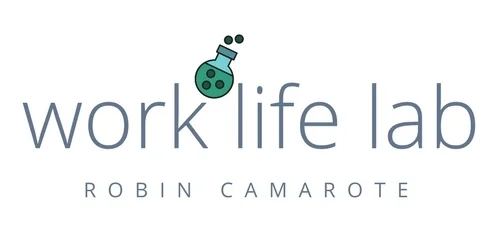Every once in a while you come across a beautifully designed, remarkably functional federal facility. Sadly, it’s probably not the one you work in. Most of the federal buildings we’re familiar with are big, boxy and concrete. They were designed during a period of our American history when our sense of style was trumped by a number of civil rights, economic and technological priorities—a time many of us don’t or can’t remember.
For those in the biz, you know that these buildings are owned by the General Services Administration and rented back to agencies. The footprint is the biggest and hairiest in Washington, but there are federal buildings in major cities across the country.
In addition to all of these buildings, the federal government owns and operates a lot of other stuff such as roads, bases and labs. There is even more that falls into the amebic “other” category, such as levees, miles of fence line, archeological sites and the Statue of Liberty, to name just a random few.
Altogether, this portfolio of federal facilities is a key component in the complex equation of what makes are country work. Our economy, our energy resources, our ability to move products in and out, and our national security are all inextricably linked to these physical locations.
Legislation and guidance during the last 10 years has evolved, but remained consistent on a couple of important concepts. Facilities tend to be an unpartisan issue with a lot of agreement that we need some facilities, they cost a lot and anything agencies can do to reduce spending or redirect funds to missions is great.
As you might imagine, there are lots of rules that govern how federal facilities are acquired, built, renovated and eventually disposed of. There are required data elements, progress reports and performance measures mandated by programs such as the Federal Real Property Portfolio (which requires the collection of 25 key data elements) and Freeze the Footprint—not coincidentally managed by GSA in collaboration with the Office of Management and Budget.
With this background in mind, I went to the Federal Facilities Council and International Facility Management Association’s Eighth Annual Policy Forum April 15 on Capitol Hill. The afternoon event coincided almost perfectly with the gyrocopter guy landing on the West Lawn.
The agenda was loaded with heavy hitters. A number of legislators and staffers included Dan Matthews staff director for the Subcommittee on Economic Development, Public Buildings and Emergency Management; Karen Lee, chief of OMB’s Management Controls and Assistance Branch; and Sen. Tom Carper, D-Del., ranking member of the Senate Homeland Security and Governmental Affairs Committee.
The key take-away? Federal real property is still important and expensive, so all are anticipating more progress in the new Congress. On what, you might ask? It sounded like the same but more. It's like when your favorite snack cracker has a new amped up recipe and packaging that says "now with more flavor.” For example, Freeze the Footprint will become Reduce the Footprint. GSA will continue to collect and maintain the FRPP inventory, and agencies should keep trying to find creative ways get rid of stuff they don’t need or use.
All of that is fine and good for building management. It’s a source of frustration and, ironically, a cost sink for agencies responsible for a lot of real property in the “other” category. Specifically, land management agencies such as the Interior Department, the Army Corps of Engineers and parts of the Agriculture Department struggle to see the value in collecting and maintaining data that they don’t really use.
It’s expensive to comply with the regulation. Some of these agencies have two or more staff members dedicated full time to collecting and checking data that they don’t use, and there is no evidence that GSA or OMB are using it on their behalf.
Data for data’s sake can be an irritating distraction for managers who would otherwise remain focused on the parallel data collection and analysis efforts underway on the stuff that actually matters most to them. As an alternative to blanket application of these federal facility mandates, a more nuanced approach would reflect the diversity and range of important federal assets.
For starters, a categorical exclusion from FRPP reporting for all land management agencies is needed.
Legislation to enable more visibility into how big buildings are managed and disposed of was raised at the meeting by Carper—one of the originators. The need became apparent after he and Tom Coburn, former senator from Oklahoma, toured the Old Chicago Main Post Office. The dilapidated, 2.7 million square foot space was shut down but continued to consume budget for many years awaiting a decision on its fate. Carper and Coburn wanted to encourage agencies to reach cost-saving solutions faster.
Thousands of small buildings got swept up in the government’s well-intentioned efforts to get their arms around this big budget drain. Through the FRPP and Freeze the Footprint, a problem of inverse proportions was inadvertently created. The greatest burden for data collection and compliance falls on the agencies with the highest count of federal buildings—not those with fewer, large buildings. Agencies with small buildings—such as remote cabins converted to backcountry offices and warehouses—are relatively low cost to operate and not at all what the originators had in mind.
So while collecting 25 data elements may not seem like a lot—and it’s not if you have 100 big places—it becomes overwhelming to collect and maintain that data on 25,000 structures all typically smaller than 5,000 square feet.
Further, these agencies lack the authority to dispose of facilities through sales, leasing or transfers without an act of Congress. So they go on collecting the data that is too high-level and imprecise for their unique needs, knowing that no one on the receiving end really cares. The management of these smaller, often remote locations is left up to the agencies—as it always has been.
Granting an exception for the land management agencies that have no office buildings of this scale would immediately save staff assigned to collect and check the data, as well as, countless hours spent correcting data that is never used or analyzed.
Originally posted on govexec.com on April 30, 2014.







